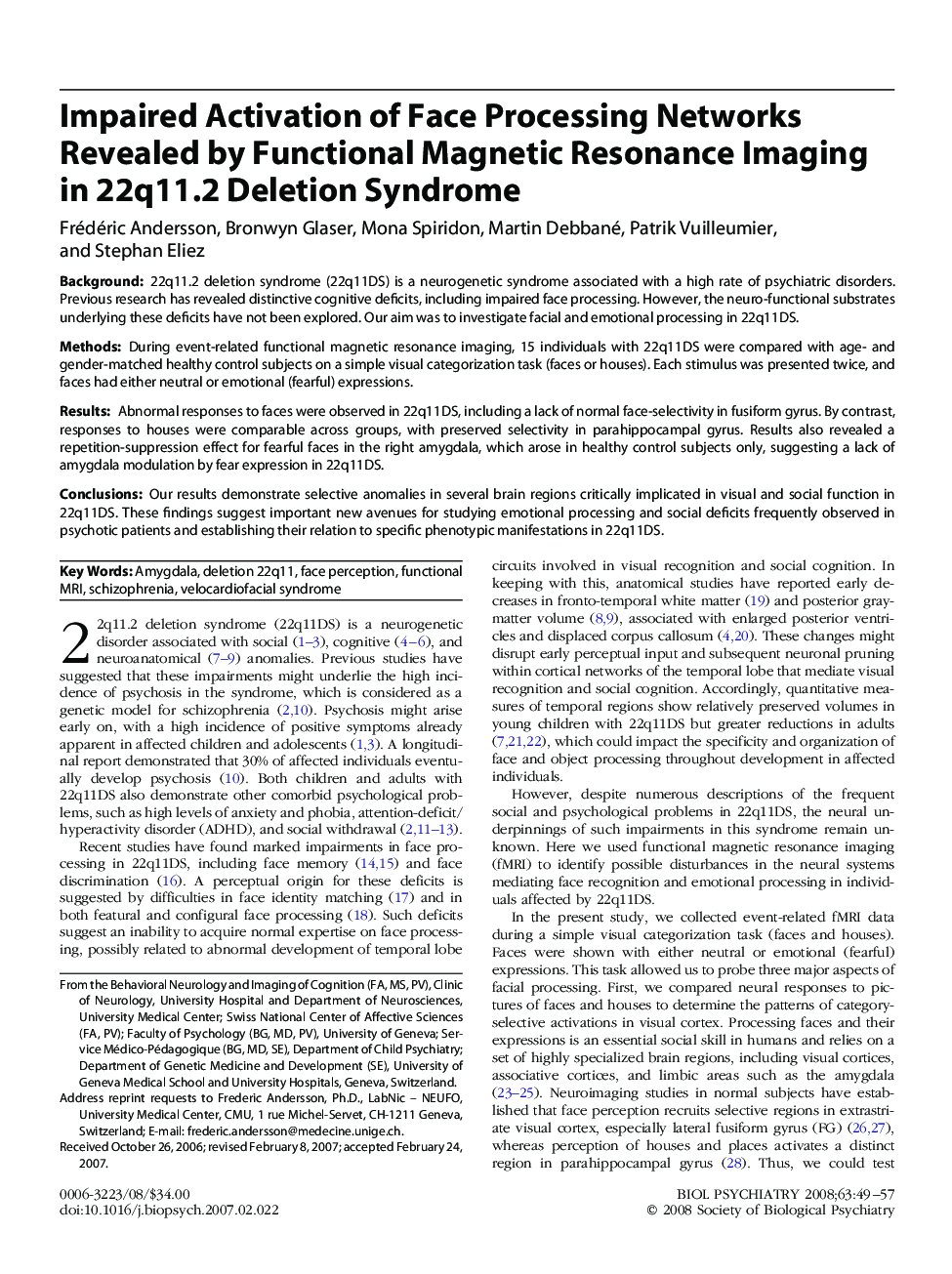| Article ID | Journal | Published Year | Pages | File Type |
|---|---|---|---|---|
| 4179493 | Biological Psychiatry | 2008 | 9 Pages |
Background22q11.2 deletion syndrome (22q11DS) is a neurogenetic syndrome associated with a high rate of psychiatric disorders. Previous research has revealed distinctive cognitive deficits, including impaired face processing. However, the neuro-functional substrates underlying these deficits have not been explored. Our aim was to investigate facial and emotional processing in 22q11DS.MethodsDuring event-related functional magnetic resonance imaging, 15 individuals with 22q11DS were compared with age- and gender-matched healthy control subjects on a simple visual categorization task (faces or houses). Each stimulus was presented twice, and faces had either neutral or emotional (fearful) expressions.ResultsAbnormal responses to faces were observed in 22q11DS, including a lack of normal face-selectivity in fusiform gyrus. By contrast, responses to houses were comparable across groups, with preserved selectivity in parahippocampal gyrus. Results also revealed a repetition-suppression effect for fearful faces in the right amygdala, which arose in healthy control subjects only, suggesting a lack of amygdala modulation by fear expression in 22q11DS.ConclusionsOur results demonstrate selective anomalies in several brain regions critically implicated in visual and social function in 22q11DS. These findings suggest important new avenues for studying emotional processing and social deficits frequently observed in psychotic patients and establishing their relation to specific phenotypic manifestations in 22q11DS.
